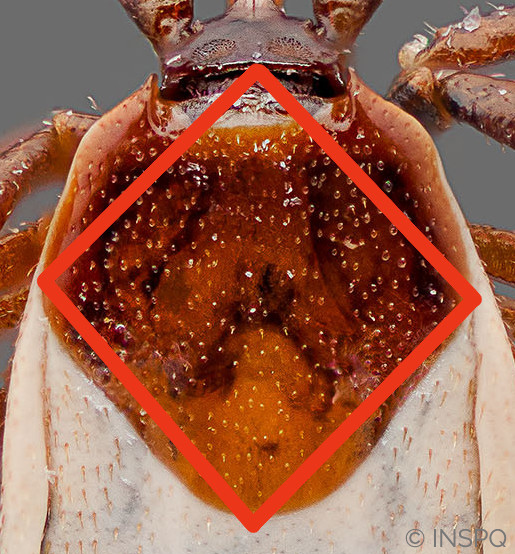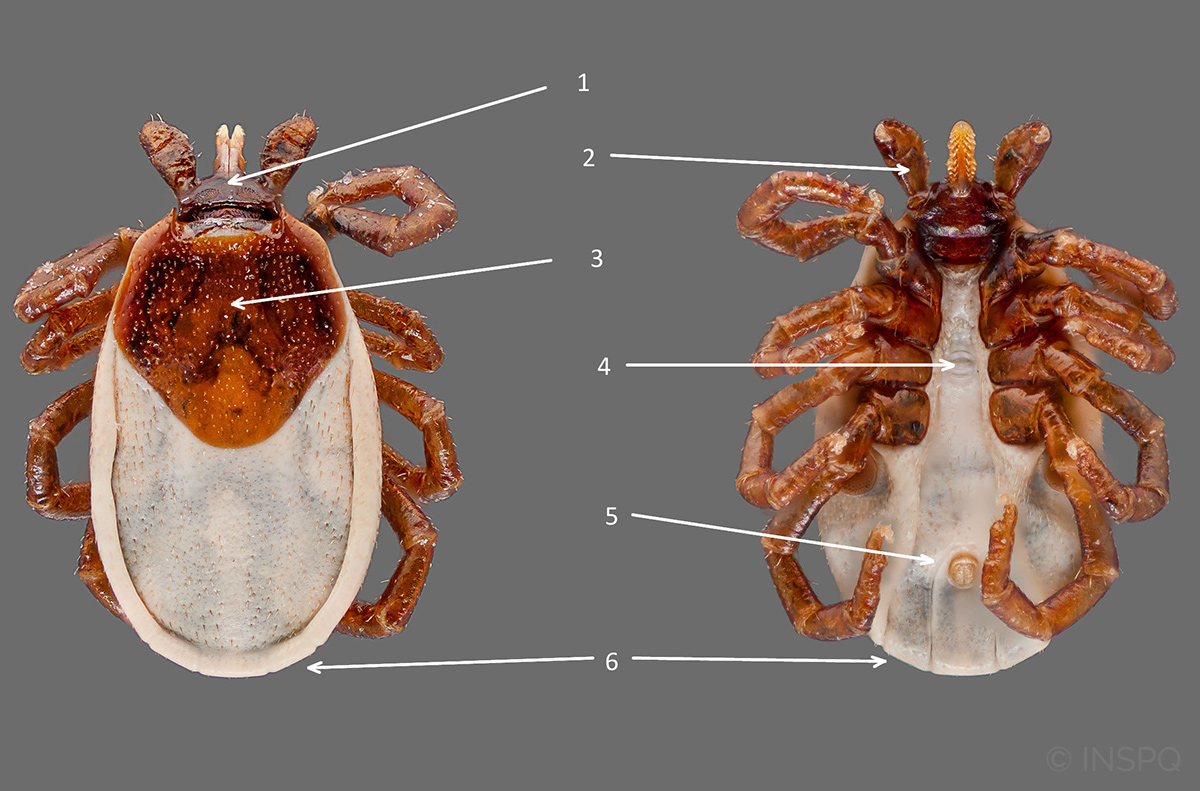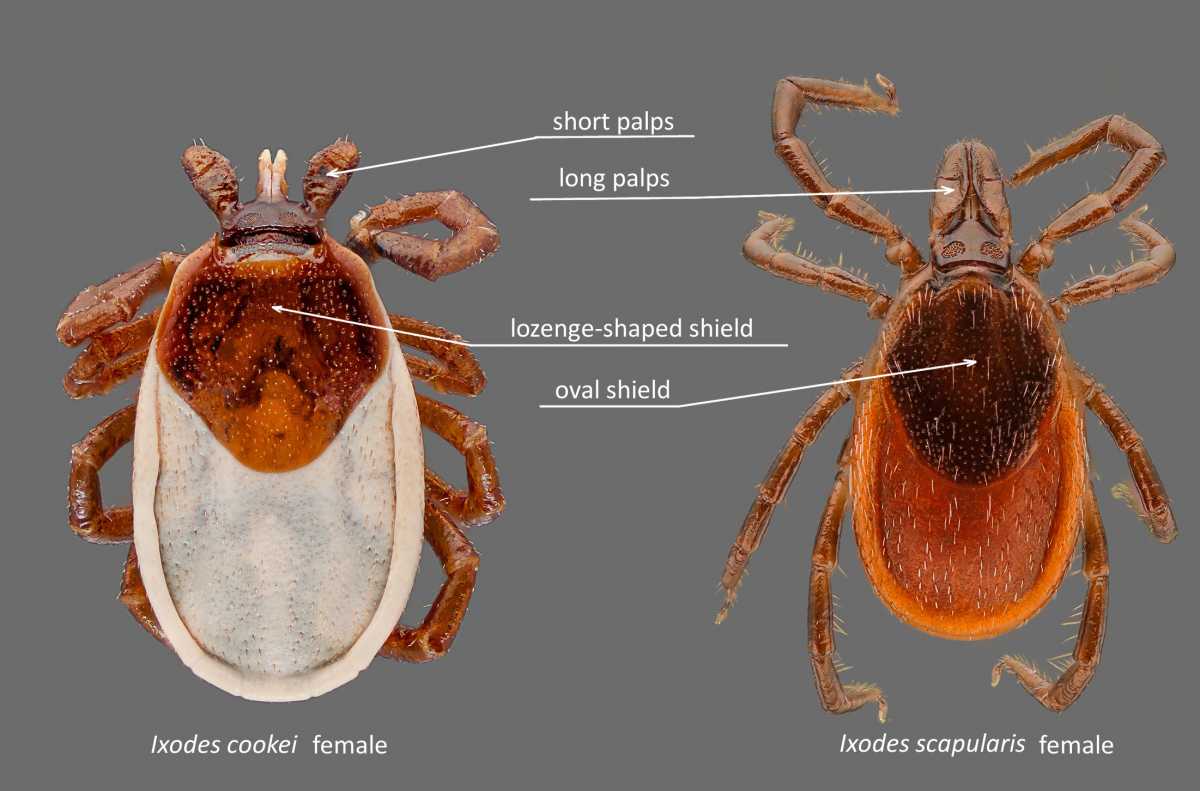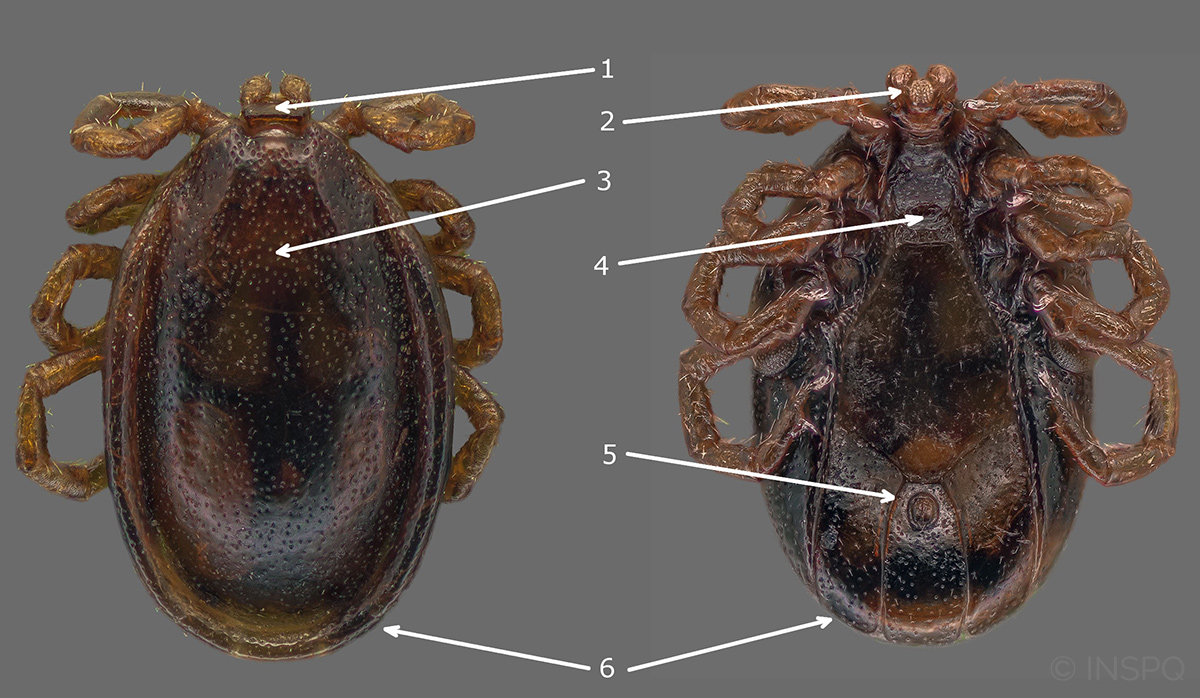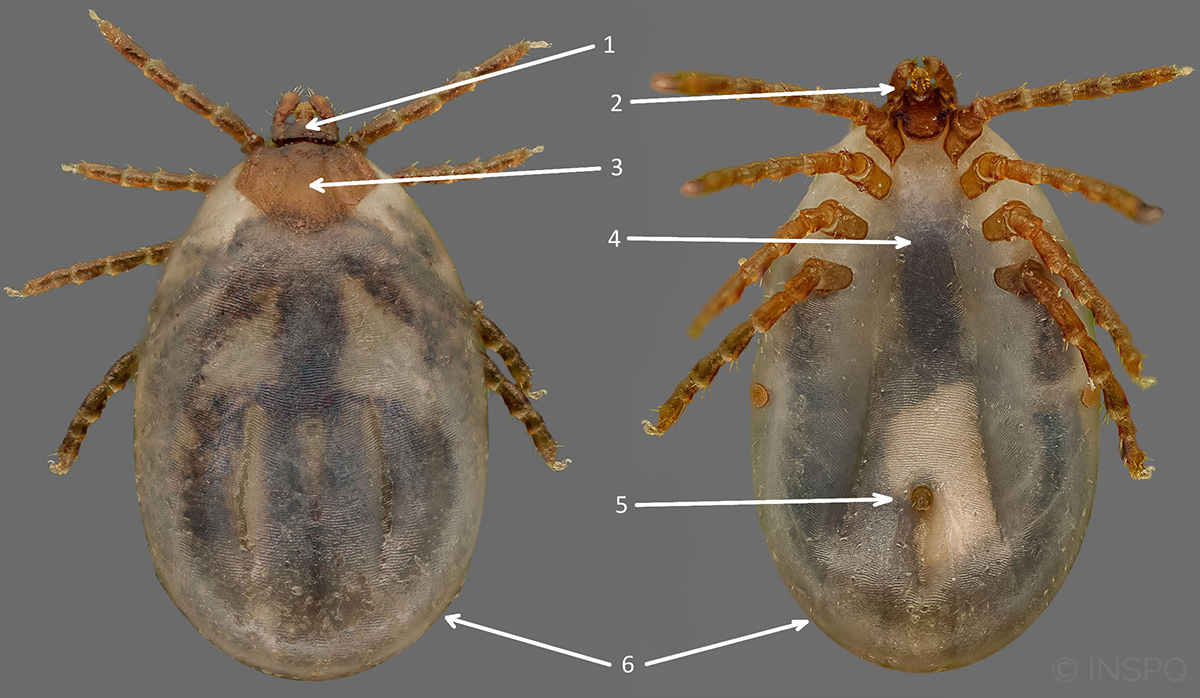Ixodes cookei, or groundhog tick
Clinical considerations
Ixodes cookei is the leading vector of Powassan virus (the agent responsible for Powassan encephalitis). Although the groundhog tick has been endemic to Québec for many years, only 5 cases of Powassan encephalitis were reported between 2004 and 2014. The very low number of cases suggests that the risk to humans of acquiring Powassan encephalitis is limited within Canada.
Geographical distribution
Ixodes cookei is a tick endemic to Québec and it is found in several regions.
Morphological characteristics
Morphologically, Ixodes cookei closely resembles the black-legged tick, but the shape of its shield generally enables us to differentiate it from Ixodes scapularis: its shield is lozenge-shaped whereas that of Ixodes scapularis is oval.
Ixodes cookei in the female stage
Dorsal surface and ventral surface of the Ixodes cookei tick in the female stage
Head
1- Basis capituli rectangular
2- Short palps (palps are the same length as the basis capituli); the palps of Ixodes cookei are shorter than those of Ixodes scapularis
Abdomen
3- Partial shield, inornate, lozenge-shaped
Absence of eyes
4- The female stage differs from the nymph stage by the presence of a genital pore
5- Anal groove above the anus, just like all the species included in the Ixodes genus
6- Absence of festoons (band of grooves and ridges on posterior margin of abdomen)
Comparison of Ixodes cookei and Ixodes scapularis ticks in the female stage. Although the two ticks seem very different in this photo, colour is not an identification criterion for these species. In fact, Ixodes cookei can be darker than the specimen in this photo, whereas Ixodes scapularis can be lighter than the specimen shown.
Ixodes cookei in the male stage
Dorsal surface and ventral surface of the Ixodes cookei tick in the male stage.
Head
1- Basis capituli rectangular
2- Short palps (palps are the same length as the basis capituli)
Abdomen
3- Complete shield, inornate
Absence of eyes
4- Presence of genital pore
5- Anal groove above the anus
6- Absence of festoons
Ixodes cookei in the nymph stage
Dorsal surface and ventral surface of the engorged Ixodes cookei tick in the nymph stage.
Head
1- Basis capituli rectangular
2- Short palps (palps are the same length as thebasis capituli)
Abdomen
3- Partial shield, inornate and lozenge-shaped
Absence of eyes
4- Absence of genital pore (the nymph stage differs from the adult stage by the absence of the genital pore)
5- Anal groove above the anus, just like all the species included in the Ixodes genus
6- Absence of festoons (band of grooves and ridges on posterior margin of abdomen)
Seasonality
Another clue as to whether you are observing an Ixodes scapularis or an Ixodes cookei tick is the time of year it was removed. The seasonal distribution of Ixodes cookei differs from that of Ixodes scapularis. In fact, adult black-legged ticks are active in the spring and fall, whereas the peak period of activity for adult Ixodes cookei ticks is the summer.


